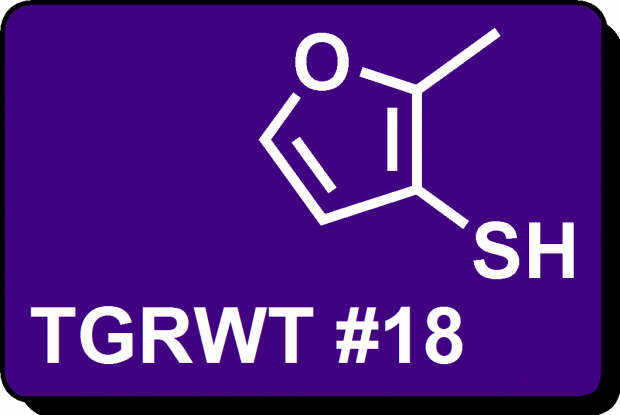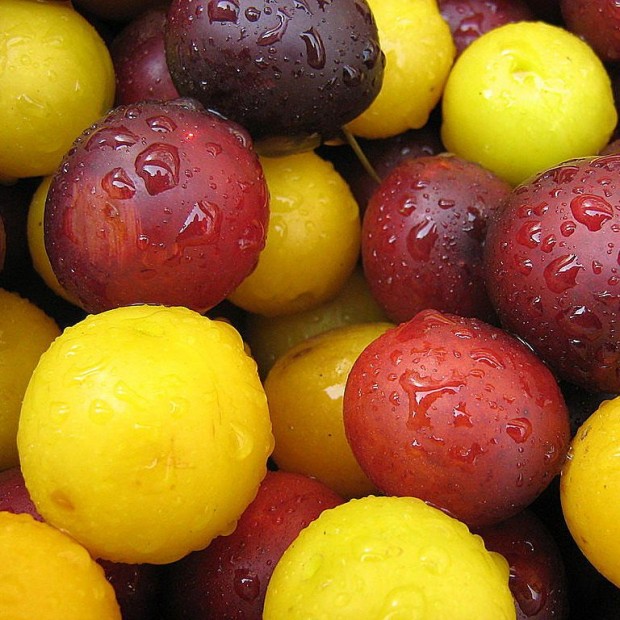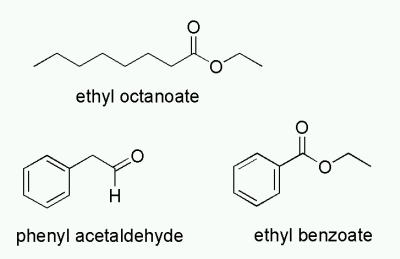
Finally it’s time for a new round of TGRWT. It’s the 18th round and the host this time is Aidan Brooks, a trainee chef who works in Spain. In his blog he’s touched upon flavor pairing several times and also wrote a blog post on the same topic for “Word of mouth”, the food blog of The Guardian. The foods to pair this time are plum and blue cheese, and as usual you can read more about how to participate in the announcement post. The deadline for submissions is September 1st.
TGRWT is not a competition, but Aidan wanted to add a little competitive element to round of the meal. So his challenge to you (in addition to the normal TGRWT contributions) is to make a dessert using plum and blue cheese which additionally incorporates any two of the following flavors: salty, sour, bitter, umami, pungent, astringent. He will pick a winner and the prize is quite cool: he’ll make a restaurant level version of it, with the name of the winner incorporated in the title of the dish and try to get this on the menu at Restaurante Ferrero where he works as a Pastry Chef on the team of Paco Morales, Spain’s “Chef of the Year 2009”.

Photo by mykrar from flickr.com (CC BY-NC 2.0)
Regarding the chemistry behind this pairing there is (for once) actually some informartion available. From a paper on gorgonzola I’ve learnt that 2-nonanone, 1-octen-3-ol, 2-heptanol, ethyl hexanoate, methylanisole and 2-heptanone are the most important impact odorants of natural and creamy Gorgonzola cheese [1]. For plums I haven’t found anything on impact odorants in fresh plums, but there is a paper on impact odorants in candied plums [2], and comparing the two papers I find that phenyl acetaldehyde, ethyl benzoate and ethyl octanoate are present in both Gorgonzola cheese and candied plums and have odor activity values greater than 1. There’s another paper as well comparing two plum varieties were the abstract mentions odor unit values, but alas – I don’t have access to the full text (maybe someone with access could check it and give me a hint about the impact odorants?) [3]. There are probably some differences between fresh and candied plums, but at least this shows that you’re safe if you want to use candied plums when cooking up something with blue cheese.

[1] Moio, L.; Piombiono, P.; Addeo F. J. Dairy Research 2000, 67, 273 “Odour-impact compounds of Gorgonzola cheese”. DOI: 10.1017/S0022029900004106
[2] Nunes, C.; Coimbra, M. A.; Saraiva, J.; Rocha, S. M. Food Chemistry 2008, 111, 897 “Study of the volatile components of a candied plum and estimation of their contribution to the aroma”. DOI: 10.1016/j.foodchem.2008.05.003
[3] Gómez, E.; Ledbetter, C. A. J. of the Science of Food and Agriculture 2006, 65 (1), 111. “Comparative study of the aromatic profiles of two different plum species: Prunus salicina Lindl and Prunus simonii L”. DOI: 10.1002/jsfa.2740650116

Interesting combination. And one I like the sound of!
I’ve been absent from recent rounds of TGRWT, but I think I might have to have a shot at this one… 🙂
The key here is to think about combination – ways to transform each of these ingredients through a cooking process that brings together their flavours, aromas and textures in a way that is new and exciting. Sliced plum and crumbled cheese will work fine, but my advice to entrants is to try to step outside the box. Hugh F-W’s Cheese With Cauliflower Sauce (deep fried crispy coated Camembert served with cauliflower espuma) is a great example of such creative thinking. I’m expecting some interesting recipes in which one of the ingredients is incorporated into a baked element and the other served as some form of accompaniment.
Hi Martin,
I have a copy of the paper you’re missing. Get in touch if you’d like me to send it to you.
Nothing intelligent to add except I’m glad to have the TGRWT back and I have just the idea of what I want to do.
[…] namely ice cream and flan, but using it has not been one of my successes. for that reason this tgrwt, hosted by aidan brooks was love/hate from the start. the rules were simple: use the two flavors […]
I’ve experimented a bit with plums lately, and having some difficulties with plums and xanthan gum. It seems to have less, or loose effect with plums. Any ideas or explanations?
Ole: Xanthan is resistant to enzymatic degradation and can be used at pH ranging from 1-13, so I can’t really see that there should be anything in plums that decomposes xanthan or renders it less effective. This leaves one possibility – dispersion. Are you sure you got the xanthan properly dispersed? Try griding xanthan with sugar before dispersion. Or mix it with alcohol, glycerol or vegetable oil. And one last question – did you use it on clarified plum juice or on a purreé?
Thanks for the reply (and a great site). I used the xanthan on cooked and pureed plums, thinned whith the cooking syrup. I`m using powdered xanthan and never had problems getting it dispersed directly with a blender before. Anyways, I skipped the xanthan this time and went for good oldfashioned pectin. A bit different result than my first plan, but worked even better.
[…] namely ice cream and flan, but using it has not been one of my successes. for that reason this tgrwt, hosted by aidan brooks was love/hate from the start. the rules were simple: use the two flavors […]
[…] and blue cheeses share a couple of flavor compounds, as I learned here. I meant to make this as an entry, but was too busy to get to it before the deadline passed. Here, […]